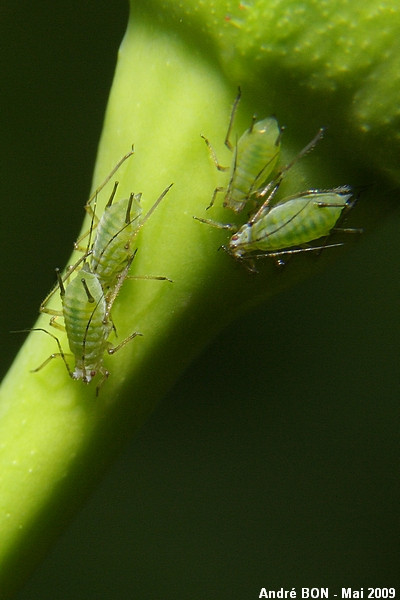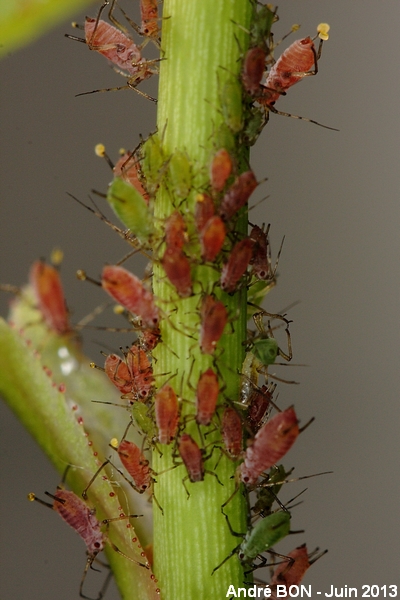

| Rose Aphid (Macrosiphum rosae (Linnaeus, 1758)) |


|
|
Scientific name: Macrosiphum rosae (Linnaeus, 1758) Common name: Rose Aphid French name: Puceron du rosier Order: Hemiptera Family: Aphididae Wingspan : 3-4 mm. Biotope: In colonies on stems and buds of roses. Geographic area: Worldwide, missing in eastern Asia. Observation period : March to October. |
Rose Aphids are rather large aphids which can be green or pinkish brown. They show long black siphunculi and a long conical tail. The antennae are at least as long as the body. There are two forms of adults. One winged form with transparent wings and one wingless form. Females hatch out in spring from eggs which have overwintered. These females can produce many generations without any involvement of males. Winged males are born in autumn and mate with females. The laid eggs will overwinter and new females will hatch out at next spring. If the colonies become overpopulated during the year, females will then produce winged aphids which will fly away to other places. Lady Beetles and some syrphid larvae are important predators to aphids and can be used in replacement of insecticides. Some ants feed on the sweet honeydew secreted by the aphids . |
| [To know more about the Rose Aphid] [Next picture] [Top] |

|
Before writing this page I was thinking that the number of aphid species you can observe in France was quite limited. But I have read that on the more than 6000 species worldwide, more of 400 of them can be seen in France. This makes me want to go deeper in the subject. |
| [To know more about the Rose Aphid] [Previous picture] [Top] |

|
Here is the pinkish form of Rose Aphids. |